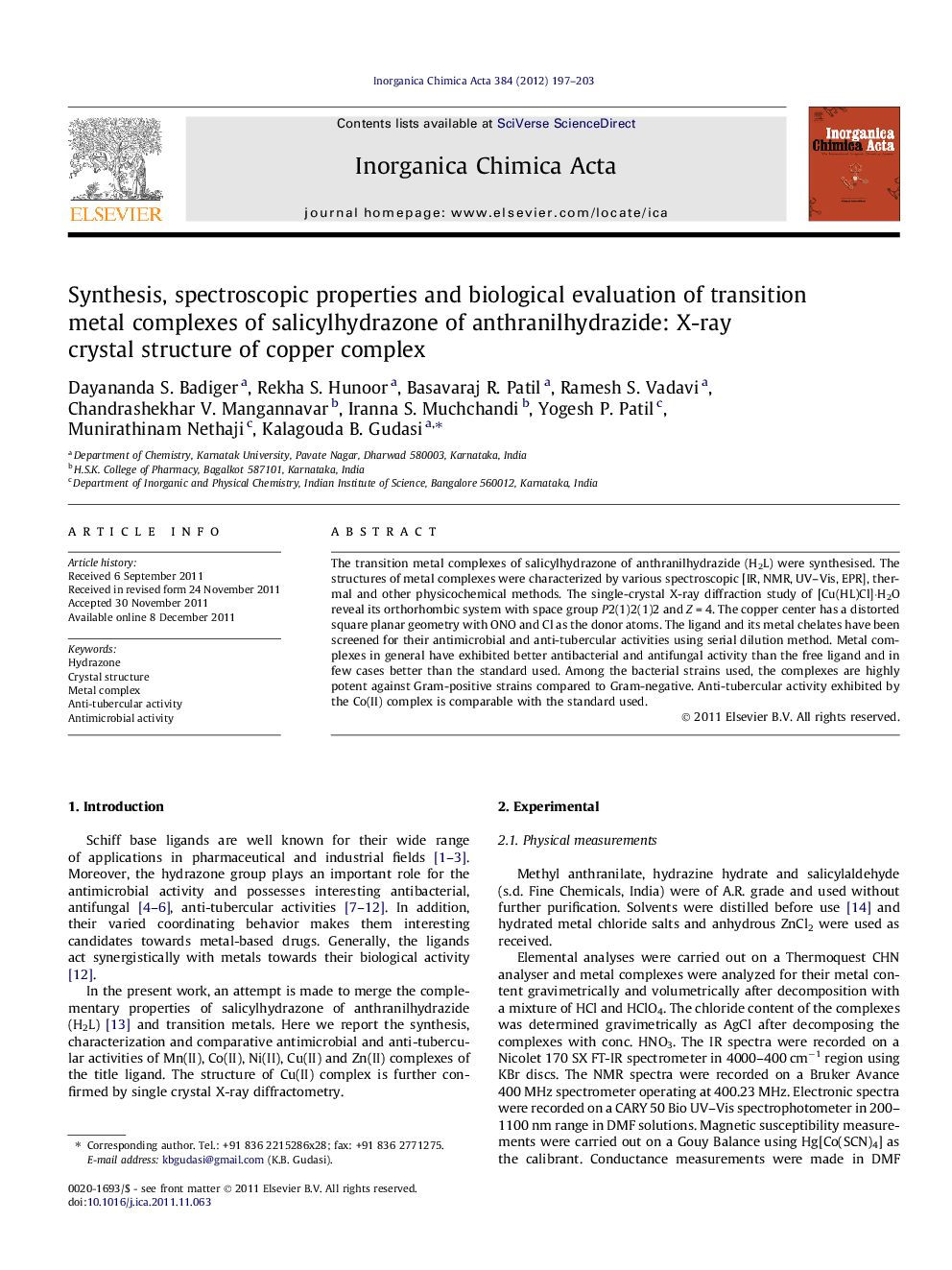| Article ID | Journal | Published Year | Pages | File Type |
|---|---|---|---|---|
| 1308638 | Inorganica Chimica Acta | 2012 | 7 Pages |
The transition metal complexes of salicylhydrazone of anthranilhydrazide (H2L) were synthesised. The structures of metal complexes were characterized by various spectroscopic [IR, NMR, UV–Vis, EPR], thermal and other physicochemical methods. The single-crystal X-ray diffraction study of [Cu(HL)Cl]·H2O reveal its orthorhombic system with space group P2(1)2(1)2 and Z = 4. The copper center has a distorted square planar geometry with ONO and Cl as the donor atoms. The ligand and its metal chelates have been screened for their antimicrobial and anti-tubercular activities using serial dilution method. Metal complexes in general have exhibited better antibacterial and antifungal activity than the free ligand and in few cases better than the standard used. Among the bacterial strains used, the complexes are highly potent against Gram-positive strains compared to Gram-negative. Anti-tubercular activity exhibited by the Co(II) complex is comparable with the standard used.
Graphical abstractTransition metal complexes of salicylhydrazone of anthranilhydrazide were synthesized and characterized by physicochemical methods. The [Cu(HL)Cl]·H2O crystals are Orthorhombic, space group P2(1)2(1)2, a = 15.850(3), b = 15.870(3), c = 5.9100(12) Å, α = β = γ = 90° and Z = 4. The compounds were screened for antimicrobial and anti-tubercular activities using serial dilution method. Metal complexes have shown enhanced activity compared to the ligand.Figure optionsDownload full-size imageDownload as PowerPoint slideHighlights► Synthesis and physicochemical characterization of H2L and its transition metal complexes. ► The single-crystal X-ray diffraction study of [Cu(HL)Cl]·H2O. ► The compounds have been screened for their antimicrobial and anti-tubercular activities. ► The compounds have proven to be good antimicrobial agents. ► Transition metal complexes are more potent than the ligand.
